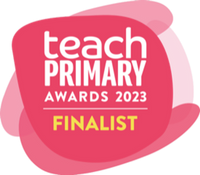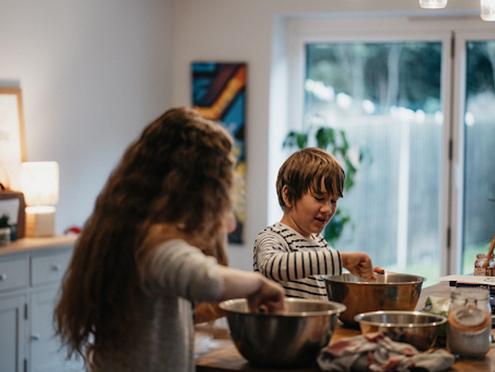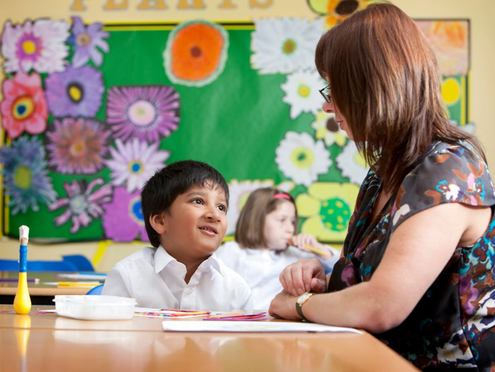Teaching spelling can be a challenge, especially for young readers. At its core, spelling is not the most engaging topic for a child to learn - without fun, engaging methods, some learners may not have enough understanding of its importance to find the motivation to work on their spelling independently. However, it is a fundamental skill that learners need to develop for effective communication.
In this article we will explore effective strategies to help teach spelling in primary school.
Why is spelling important for young learners?
Spelling is important as it helps learners to develop a connection between letters and their sounds. It also helps learners to recognise high frequency common exception words, that is, words that can be tricky to sound out using phonics. These skills combined will assist learners as they read and write.
The more familiar a student is with a word, the more likely they will be able to recognise it in a new text, spell it in their writing and use it in the correct context in their speech and writing.
Learning the spellings and meanings of different homophones helps learners to quickly discern the correct meaning of that word (e.g., right, write, rite).
With the use of technology rapidly increasing, there has been much debate about whether it is necessary to teach spelling, given resources like spellchecker. However, it is important to keep in mind that the learner must be able to start the word correctly and get most of the letters right for the spellcheck technology to be of help.
Also, if an incorrect spelling of a word is used but that spelling is still a word, then spell check will not recognise this as a mistake (e.g., dose instead of does). The consequence of this is that the student will continue to make that mistake, the mistake becoming increasingly embedded and the student accepting that this is the correct spelling.
Though spelling is usually taught in literacy, the benefits of accurate spelling have an impact on learners’ entire lives - not only does it benefit their communication skills in exams, where responses are often written by hand without the assistance of spellcheck, but strong spelling skills open doors into careers that involve writing. For these reasons, teachers of all subjects should focus on spelling in their lessons as part of an overall disciplinary literacy strategy.

Improve spelling with Bedrock Learning
Bedrock Grammar is here to make a difference. It teaches a deep understanding of language and how it works. It helps learners understand the effect of different grammatical choices and it improves written accuracy and fluency.
Effective strategies for teaching spelling
A common misconception is that learners will be able to spell just by reading plenty of books or being exposed to lists of words to memorise. This is not the case for every learner; some learners may be able to acquire spelling knowledge incidentally, but relying on all learners acquiring these skills by chance leaves some behind.
To ensure every learner in your class is able to spell, your spelling instruction will need varied methods, full of guidance and support.
Teach students to sound out words
As the teacher, it is a good idea to model sounding out words as you spell them. This will encourage students to do the same.
When learners sound words out loud, it helps them internalise the correct order of the letters using their ears as well as their eyes.
When doing this, students will write the word as they hear it phonetically. This may result in some mistakes e.g., through may come out as thru to begin with. But with more exposure and practise, students will become familiar with the correct spelling.
Memorise words with the 'Look, Say, Cover, Write, Check' strategy
It is important that children can say a word before they spell it. This strategy can be used in the classroom or at home. It works best when spellings are on a grid template.
In this strategy, students look at the word to be learnt, then say it (to themselves or an adult if they are being supported). They then cover the word with their hand or a piece of paper. The next step is to have a go at writing the spelling without looking and then check by comparing the spelling they have written to the spelling from the original list. If the spelling is not correct, the learner should repeat the steps above several times across the grid.
This strategy puts the responsibility for determining if the spelling is correct or not on the shoulders of the learner, as opposed to the teacher telling them if it is correct or not. This encourages them to improve their spelling skills independently, and is a great task to be sent home as homework.
Look for spelling patterns
A spelling pattern is a sequence of letters that represents a sound for example, -nch and -ight.
Learners could be given the pattern -ake and come up with words containing that pattern: cake, lake, forsake, make, take, bake, hake.
Exploration of spelling patterns helps writers to become more aware of visual patterns in written English, the possible sequence of letters in English and that most spelling patterns represent a variety of sounds. This supports writers in visualising and remembering words (Snowball & Bolton, 1999).
Fill in the missing letters
Learners could be given a variety of words with similar sounding digraphs or trigraphs, then given the digraphs and/or trigraphs to choose from. For example:
Choose from ur/er/ir
- Lett_ _
- Th_ _st
- V_ _y
- St _ _
This gives learners an opportunity to discuss that these patterns can sound similar. They can also begin to see what ‘looks’ correct. The more they are exposed to this kind of practice, the more they will get a sense of when a word ‘looks’ correct and when it does not.
Tracing words
Learners could trace words as a spelling strategy; this also develops muscle memory. They could write the word on a sheet of paper, making it large enough to trace over. They then trace over the word with a pen or a finger, saying it as they do.
The idea of tracing can be done in lots of ways. If the words being learned are printed or written out large and then laminated, the learner could trace over this in marker, glitter, paint, Play-Doh, shaving foam or sand. Alternatively, the learner could trace the word into sand, shaving foam etc. This can be especially helpful for kinaesthetic learners, while making the process of learning to spell engaging, tactile and fun.
Set up a classroom word wall
A classroom word wall could be set up; this should be a ‘working’ wall in order to keep it fluid. Spellings for the week could be on display. Learners themselves could add to the display with similar words, or words that form a spelling pattern, as they become more confident with the new spellings.
You could even provide multiple contexts for your new words by asking learners to cut and stick pictures onto the display - this is especially helpful when combining your spelling strategy with the explicit instruction of Tier 2 vocabulary.
Create your own spelling game
Learners could work in groups to come up with their own spelling games. This could involve die, boards made from cardboard, sets of cards they can create themselves and even spinners they could make from split pins and cardboard. The world of spelling is their oyster!
These games can be consolidated by games that teach grammar and vocabulary.
Spot the odd one out
This encourages learners to look closely at a spelling and actually ‘notice’ in reading what is correct.
On the board the teacher could give students three options of spelling a word:
- toyes
- toys
- toyies
Students write which option they think is correct on their mini whiteboards.
Spelling riddles
Use a spelling that learners have been practising and give them 2 or 3 clues to help work out which spelling it is.
Examples of clues:
- This word has 4 letters
- The middle vowel digraph is the same as in coin
- If you’re unlucky, you might find one on your nose
- Answer: boil

Mnemonics
Learners can help themselves to learn tricky spellings by using mnemonics. They come up with a sentence to help them learn the whole word or the part they find tricky. There are some well-known mnemonics out there, or they can get creative and come up with their own.
For example:
- Could -> See, oh you lucky duck!
- Because -> Big elephants can always understand small elephants
Saying words as they are spelled
There are some words that, even for adults, are difficult to spell, just because they are full of silent letters and abnormal pronunciations. For example, the words “restaurant”, “business”, or “Wednesday”.
To tackle these words, a helpful method could be encouraging learners to say them as they are spelled, even though they are not actually said that way. Write the words on the whiteboard and model to the class the ways you sound them out - “Feb-ru-ary”, or “Wed-nes-day”, or “sep-a-rat-e”. Strategies like these can stick with a learner for their entire life!
Host spelling quizzes
Host regular spelling quizzes in your classroom. These should be as ‘pressure free’ as possible as they are not intended to cause any learner distress.
The quizzes could be carried out in the traditional way of every learner writing a spelling as the teacher calls it out. This is a solid way of assessing individuals. To keep everyone engaged and motivated, you could try doing this in pairs or threes every so often. That way those who really struggle with spelling have a ‘safety net’, so to speak, and will learn from their peers.
Spelling and grammar instruction
Spelling instruction is most successful when combined with explicit vocabulary and grammar instruction. This way, every encounter with an ambitious word to spell is also an encounter with rich vocabulary, as well as how it is used in the context of a sentence. When spelling, grammar and vocabulary instruction are combined, students improve their literacy holistically - this has a significant impact on their attainment in every subject throughout their academic career.





